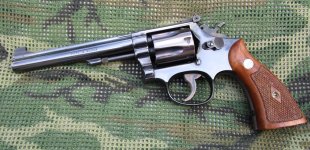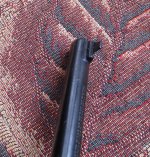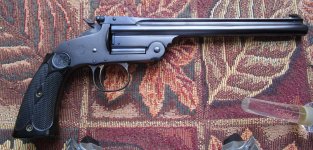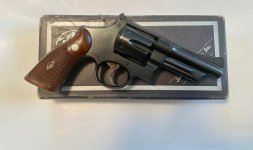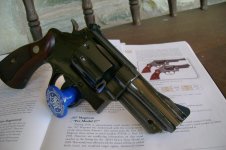Well finally got my newly acquired pre 27 out for a range trip with a buddy of mine from the forum.
We both brought 3 1/2 inch guns.
Mine S 123475 had proud pins. 10/54
My buddys S 138XXX had flush pins. 12/56
This made me curious what time frame the change was starting.
Looking at about a dozen or so on auction sites I found numbers all over the place. Even three five digit numbers with flush pins.
Was the change over slow?
Is it possible some of these early guns were refinished by the factory later because of some having the rash and were returned as flush pin models?
Was the rash covered under warranty?
Luckily mine was spared the rash but I have looked at a couple with it.
We both brought 3 1/2 inch guns.
Mine S 123475 had proud pins. 10/54
My buddys S 138XXX had flush pins. 12/56
This made me curious what time frame the change was starting.
Looking at about a dozen or so on auction sites I found numbers all over the place. Even three five digit numbers with flush pins.
Was the change over slow?
Is it possible some of these early guns were refinished by the factory later because of some having the rash and were returned as flush pin models?
Was the rash covered under warranty?
Luckily mine was spared the rash but I have looked at a couple with it.
Last edited:



